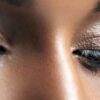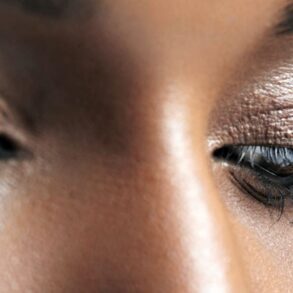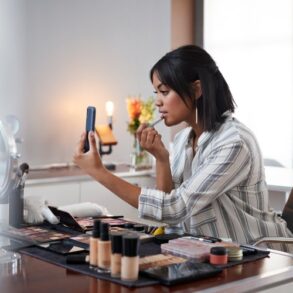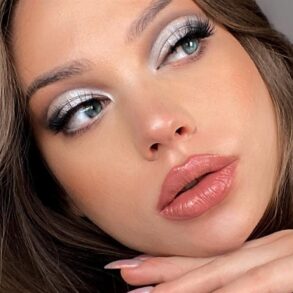
TikTok is full of tips and tricks for getting noticed, fast. A recent example of the social machine’s prowess? Red nail theory. From meticulously curated “cores” to trend-defining makeup palettes, TikTokers can turn even the most classic beauty looks (ahem, a red manicure) into viral sensations that feel fresh and conversation-worthy.
Red nail theory revamps the idea of the timeless red manicure into a vehicle for instant attention—perhaps even of the romantic variety. If you’ve ever experienced the self-assuredness (and the double-takes) that comes when you incorporate red into your makeup or wardrobe, you’ve already done a bit of case testing.
But what exactly is red nail theory—and does it really work? Experts help us break it down.
meet the expert
- Leatrice Eiseman is the executive director at the Pantone Color Institute and founder of Eiseman Center for Color Information and Training.
- Mazz Hanna is a celebrity nail artist and CEO of Nailing Hollywood.
- Anna Yusim, MD, is a psychiatrist and executive coach.
Red Nail Theory Origins
Red nail theory cropped up in early 2022 when public relations expert and creator Robyn Delmonte noticed the effect and took to TikTok to coin it. “I know guys are attracted to red nails, and I’ll tell you why,” Delmonte asserts, gesticulating with her cherry-red manicure. “Every time I have red nails […] a guy comments on it.” She postulates that the positive association comes from ‘90s beauty norms and the fact that many of the era’s female caretakers rocked the red.
Eiseman agrees with the hypothesis. “Much of color association starts in childhood,” she explains. “It is a logical conclusion that men would be attracted to red nail polish as a reminder of the colors their mothers wore on their nails at a significant time when they were strongly connected and dependent.”
Since then, the trend has taken on a life of its own, with TikTokers painting nails in the most fiery shades while discussing the theory and reporting results.
Getty Images
How to Use Red Nail Theory
The first step of red nail theory involves adopting an appropriate manicure.
“Red nails are great because there are so many different shades and undertones that can be paired with any skin tone or personal preference,” says Hanna. “Red nails are truly timeless and chic.”
Additionally, as Eisman notes, there’s no reason to relegate the powers of red to nails alone. “The use of red in other areas, obviously on the lips, or in items of clothing, are equal attention-getters.”
Does Red Nail Theory Actually Work?
“Associations with red can be culturally significant, thereby evoking specific emotions and perceptions,” says Dr. Yusim. “Red is often associated with love, romance, and passion in many cultures.” She adds that red is the color of blood, which calls to mind vitality and energy—and that all of these associations can, indeed, subconsciously influence how individuals perceive someone wearing red nail polish.
“I think that the red nail theory is a real thing because psychologically, we associate red with passion, love, and power,” says Hanna. “While it’s not necessarily scientifically proven that red nails are attractive, it often makes you appear more confident and alluring.”
The shade holds an equally powerful position when it occurs naturally, further proving the theory’s broader point. “Red is mother nature’s signal color—think of hummingbirds and their attraction to red,” says Eiseman. “It is a dynamic color that is impossible to ignore.”
Getty Images
Benefits and Limitations
Regardless of the truth of the theory, red nail polish offers a quick confidence boost. “Wearing red nail polish can be seen as a form of confident self-expression, showing that one is not afraid to stand out and be noticed,” says Dr. Yusim. “Confidence can contribute to attractiveness: when individuals feel confident and comfortable in their own skin, it can make them more appealing to others.”
That said, there’s absolutely no guarantee that the red-nail reaction is a universal one—and that initial attention can only get us so far. “Individual preferences of what is attractive versus not vary widely, and it’s important to remember that personal qualities and interactions play a significant role in attracting others, rather than solely relying on the color of nail polish,” says Dr. Yusim.
Controversies and Criticisms
A 2008 study published in the Journal of Personality & Social Psychology found that red, relative to other achromatic and chromatic colors, led men to view women as more attractive and sexually desirable—and that men were unaware of the effect. But while wearing red on your nails may succeed in getting a human being’s attention, this likely has more to do with the bold nature of the color (and that association’s effects on both parties) and less to do with said human’s mom or other past matriarchal figures.
“Ultimately, feeling confident and comfortable in your own skin, expressing yourself authentically, and cultivating positive personal qualities are likely to have a more significant impact on attracting others than the specific color of nail polish you choose,” says Dr. Yusim. She adds that an individual’s associations with colors—as well as their experience with past caretakers, again the crux of the original theory—varies widely and cannot be counted on as universal.
This post was originally published on this site be sure to check out more of their content.









